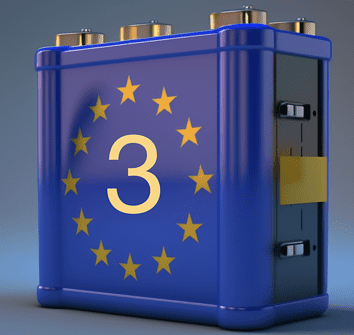
The global battery market is booming. Boosted by the fast development of electric driving, consumer electronics, and storage for off-grid and microgrid systems, the industry has developed rapidly worldwide. In many cases, government policies and incentives have augmented these developments. In a 3-part series, we examine the European contributions to this trend and the role of the European Battery Alliance (EBA). In part 3, we look at the future and EBA’s ambitions.

Batteries can play a significant role in the process of decarbonization, contributing to reducing greenhouse gas emissions and supporting the transition to cleaner energy sources. Batteries support the adoption of electric vehicles and the integration of renewable energy sources. However, it is essential to address the environmental consequences associated with battery production and use, such as raw material extraction, manufacturing emissions, and recycling, to ensure that the growth of the battery industry aligns with climate goals. The European Battery Alliance, a key initiative launched by the European Commission in 2017, is working to align the challenges and opportunities.
EBA’s big goal is to foster a competitive and sustainable battery ecosystem in Europe by bringing together stakeholders from the entire battery value chain, including manufacturers, end-users, policymakers, research institutions, and non-governmental organizations. All of them have a stake in the challenges and opportunities.
Biggest opportunities
Electrification of transportation: Batteries are essential for electric vehicles (EVs), which have significantly lower greenhouse gas emissions than internal combustion engines, especially when charged using electricity from renewable sources. The widespread adoption of EVs can help reduce overall transportation-related emissions.
Renewable energy integration: Batteries can store energy generated from intermittent renewable sources like solar and wind, helping to balance the grid and reducing the reliance on fossil fuel-based power plants. Batteries can support a cleaner, low-carbon energy system by enabling a more stable integration of renewable energy.
Distributed energy resources and demand response: Batteries can be used in residential, commercial, and industrial settings to store energy during periods of low demand and release it during peak demand periods. This can help reduce the need for additional power generation from carbon-intensive sources and improve the overall efficiency of the energy system.
Biggest challenges
However, these opportunities come with a bunch of conditions. Climate-related consequences and challenges are associated with the growth of battery production and use.
Raw material extraction: Mining and processing of raw materials for batteries, such as lithium, cobalt, and nickel, can have environmental impacts, including habitat destruction, water pollution, and greenhouse gas emissions. Responsible sourcing and developing more sustainable extraction methods are crucial to minimize these impacts.
Manufacturing emissions: Battery production requires significant amounts of energy, and if this energy comes from carbon-intensive sources, it can result in substantial greenhouse gas emissions. Transitioning to cleaner energy sources for battery production is essential to minimize the overall carbon footprint.
Recycling and waste management: As the number of batteries in use increases, managing end-of-life batteries becomes a significant challenge. Effective recycling and waste management systems are needed to minimize the environmental impact, recover valuable materials, and reduce the demand for new raw materials.
Supply chain emissions: Transporting raw materials, components, and finished batteries across different stages of the supply chain can generate additional greenhouse gas emissions. Reducing these emissions through more localized production, efficient logistics, and cleaner transportation modes can help mitigate these impacts.
Ambitious objectives
Thore Sekkenes, EBA250 Programme Director at EIT InnoEnergy, aims to address all the opportunities and challenges with the EBA’s 2030 objectives. “Given the accelerated progress to date, we consider it necessary to update the 2018 European Strategic Action Plan on Batteries in collaboration with the European Commission to achieve equally ambitious objectives for 2030”, he says.
“In addition to the EU supporting 1,000 GWh of annual demand, the update should also reflect the expected added value in Europe to be created at €625 billion by 2030.” For that year, the EBA proposes targets of 100% domestic recycling coverage in the EU, 90% domestic cell manufacturing covering EU needs, 60% of domestic raw materials being processed in the EU, and sourcing 40% of active materials used in EU manufacturing.
The most important strategic objective, Sekkenes says, is ensuring the EU’s resilience and strategic autonomy across the battery value chain. “In addition, we will continue to accelerate demand for sustainable batteries produced in Europe while accelerating regulation and maintaining Europe’s technology sovereignty through continued access to funding. Lastly, building strategic alliances with non-EU stakeholders and strengthening external partnerships will enhance the resilience and competitiveness of the EU battery industry.”
Safer traffic, cleaner vehicles
All in all, for the EU to reach its energy and climate goals, batteries are crucial, and the further development of a viable European ecosystem should go along with it. Sekkenes: “The EBA is delivering on its purpose of creating a competitive and sustainable battery cell manufacturing value chain in Europe, ensuring that all Europeans benefit from safer traffic, cleaner vehicles, and more sustainable technological solutions. With the adoption of the EBA’s updated strategic action plan and making progress on more immediate action points, we can accelerate the transition to clean energy in Europe while continuing to build a strong, competitive battery value chain.”

